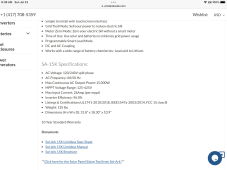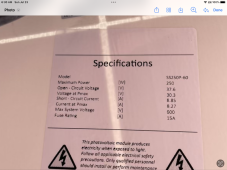brushmrw
New Member
Greetings,
I’m looking for recommendations on putting together a somewhat large, scalable Solar system
1. This is a privately owned community center in Baja Sur
2. They have grid power
3. Currently have 20+ 250 watt panels on the roof
4. They bought 2 pow 120 volt, 3000 watt, 24 dc volt inverters which I don’t think will help much.
5. Looking to supply as much 240 VAC energy as possible to the building for daytime operations and storing a reasonable amount in a battery bank for overnight use
Requesting recommendations on 240 VAC inverters/chargers 12,000 (watt or so) that can be scaled up as funds allow. Also battery recs. She currently has 2- CHINS LiFePO4 Battery 12V 300Ah Lithium Batteries
Let me know what the brain trust thinks
Best
Bill
I’m looking for recommendations on putting together a somewhat large, scalable Solar system
1. This is a privately owned community center in Baja Sur
2. They have grid power
3. Currently have 20+ 250 watt panels on the roof
4. They bought 2 pow 120 volt, 3000 watt, 24 dc volt inverters which I don’t think will help much.
5. Looking to supply as much 240 VAC energy as possible to the building for daytime operations and storing a reasonable amount in a battery bank for overnight use
Requesting recommendations on 240 VAC inverters/chargers 12,000 (watt or so) that can be scaled up as funds allow. Also battery recs. She currently has 2- CHINS LiFePO4 Battery 12V 300Ah Lithium Batteries
Let me know what the brain trust thinks
Best
Bill




